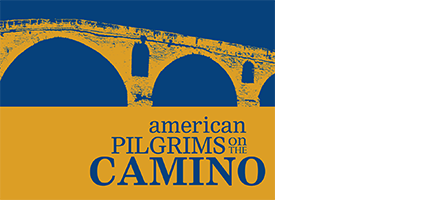Camino Non-Fiction Books: History, Spirituality, Culture and Culinary
Explore more of the Camino’s history and culture with these non-fiction books. Get information on cultural traditions, medieval routes, the history of Santiago, the Codex Calixtinus and Saint James himself.
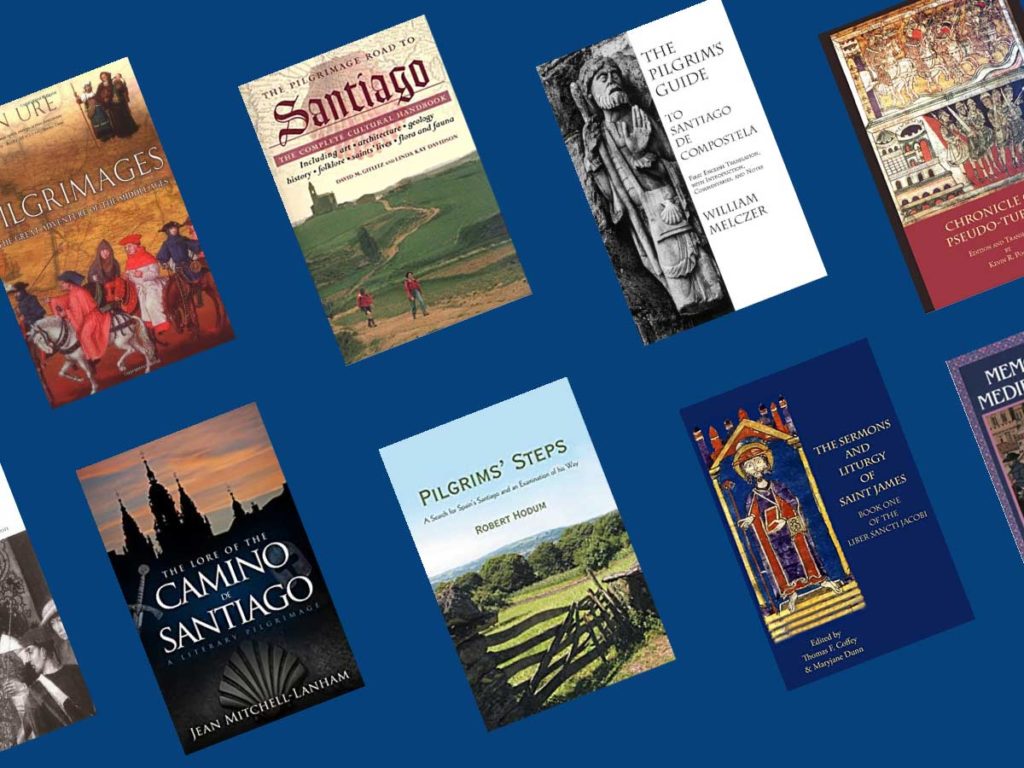
Be sure to visit our Camino inspiration page, which is also a gateway to finding Camino guidebooks, Camino memoirs and personal stories, and fiction about the Camino.
Camino Non-Fiction: Culture, Culinary and History
The non-fiction culture, culinary and history books are listed here in alphabetical order by author.

The Spiritual Traveler: Spain – A Guide to Sacred Sites and Pilgrim Routes, Beebe Bahrami
(published 2009)
Cultural anthropologist and writer Beebe Bahrami explores the truly sacred, spiritual places, traditions, people, and roads of Spain. This is a non-denominational and deeply anthropological and folkloric travel book on Spain’s prehistoric, pagan, Jewish, Christian and Muslim past. It is also a spiritual exploration of the country’s diverse present, such as in emerging communities dedicated to Buddhism, Hinduism, animistic Earth-based spiritualities, as well as current revivals of the land’s connection to the three Abrahamic faiths. Each chapter explores a region, a thematic route and the most vibrant spiritual life of that area.
More info on Goodreads.
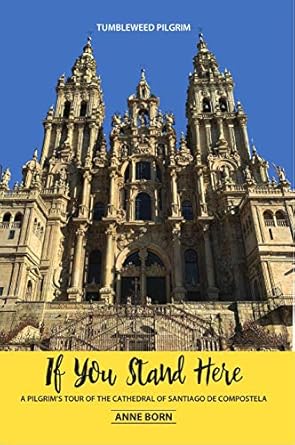
If You Stand Here, Anne Borne
2021 edition
Did you notice that all the Camino guide books drop you at the door of the Cathedral of Santiago de Compostela without bringing you inside? This book will not focus on the exact size of the building or all the dates of all the various building programs. It will place you on the very spot in the Cathedral where something marvelous happened in the history of this extraordinary space. It will invite you to imagine the new archbishop saying Mass for the first time, the music director playing new music at the organ, or a local poet who stops in one late afternoon to say some prayers.
Find Anne online here.

Discovering The Way: Reflections and Practices for the Camino de Santiago, Dawn Dishman
(published 2025)
Dawn and Dave Dishman have run a series of group trips on the Camino. Dawn works as a spiritual director and campus minister, and pours forty years of practical experience and hard-earned wisdom into this guide. It includes a set of spiritual reflections and practices for our group members, which they’ve now made available for everyone.
Each section contains passages for reading, questions for reflection, and recommended spiritual practices. Years of of experience working with people searching for God come together in penetrating observations and exercises.
The Dishmans feel that any pilgrim interested in discovering more of God will benefit from these thoughts and practices.

Flowers of the Camino Francés: A pilgrim’s guide to the flowers of the Camino de Santiago – Camino Francés, Hector Jimenez
(published 2025)
This book is a unique companion for pilgrims, blending the natural beauty of the Camino with fascinating insights into its flora. It explores over 80 varieties of wildflowers, delving into their history, folklore, medicinal uses, and ecological significance. Whether preparing for the journey or walking the Camino, this guide adds depth and color to the experience, making each step more meaningful.
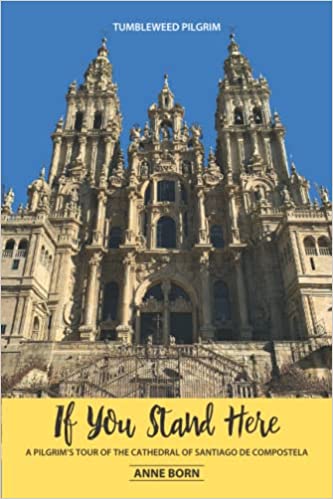
If You Stand Here: A Pilgrim’s Tour of the Cathedral of Santiago de Compostela, Anne Born
(published 2021)
This book doesn’t focus on the exact size of the building or all the dates of all the various building programs. But it will place you on the very spot in the Cathedral where something marvelous happened in the history of this extraordinary space. It will invite you to imagine the new archbishop saying Mass for the first time, the music director playing new music at the organ, or a local poet who stops in one late afternoon to say some prayers.
If you stand here, you will be standing: where the Spanish princess Catherine of Aragon watched the Botafumeiro swing in 1499, where the Italian prince, Cosimo de Medici III entered the Cathedral in 1669, where the poet Federico García Lorca visited with his classmates from the University of Granada in 1916, where American writer Edith Wharton gazed at the Pórtico de la Gloria sculpture at sunset in 1925, or where the archbishop ran for his life when an angry mob set fire to the Cathedral roof in 1117.
More info on Goodreads.

The Miracles and Translatio of Saint James: Books Two and Three of the Liber Sancti Jacobi, Thomas F. Coffey and Maryjane Dunne
(a translation, with introduction, commentaries and notes, published 2018)
The pilgrimage route to Compostela has an exceptional witness from its early days: the Liber Sancti Jacobi or Book of Saint James. The text provides an encyclopedia on Saint James the Greater and on the pilgrimage to Santiago. Of the five books included in the manuscript, Books II and III, published here in English translation, deal directly with the cult surrounding Saint James. Book II recounts 25 of the miracles attributed to the saint between the years 1100 and 1135. Book III describes the transfer of James’s body to Santiago from the Holy Land, where legend says he was beheaded by Herod. Together these two books of the Liber Sancti Jacobi provide a comprehensive description of the power and importance of the saint, reflecting his significance and the significance of Santiago de Compostela as one of the three major Christian pilgrimage sites during the Middle Ages.
More info on Goodreads.
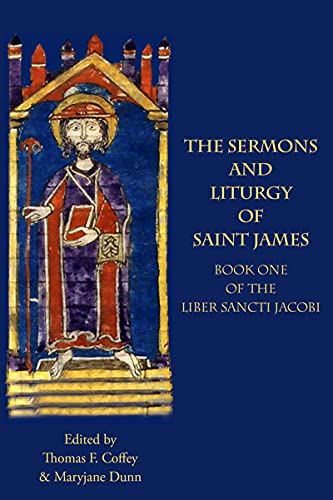
The Sermons and Liturgy of Saint James: Book I of the Liber Sancti Jacobi, Thomas F. Coffey and Maryjane Dunn
(published 2021)
The pilgrimage route to Compostela is graced with an exceptional witness from its early days: the Liber Sancti Jacobi or Book of Saint James. This book is found most famously in a twelfth-century manuscript from the library of the Cathedral of Santiago de Compostela. The text provides an encyclopedia on Saint James the Great and on the pilgrimage to Santiago de Compostela, the traditional site of his burial in Galicia in northwestern Spain. Of the five books included in the manuscript, Book I, the longest, contains the Sermons and Liturgy of Saint James. It is published here in English translation for the first time.
The work consists of two major sections: the first contains sermons and readings on Saint James, and the second presents a compendium of liturgical prose, poetry, and musical material suitable for the feasts of Saint James. In addition, Book I is accompanied here by the first full translation of the addenda that consists of material gathered subsequent to the compilation of the original five books and that was inserted at its end.
More info on Goodreads.

The Miracles of St. James: Translations from the Liber Sancti Jacobi, Thomas F. Coffey, Maryjane Dunn, and Linda Kay Davidson
(published 1983)
This book offers the complete text of Book II of the Codex Calixtinus, the twenty-two miracles associated with St. James. The introduction analyzes the types, places and recipients of the miracles and discusses the appearances of St. James himself in these stories. This is a contemporary description of the necessity, the ways and means, and the dangers engendered in making the Compostela pilgrimage. The original author’s diatribes against the abuses common on the route give the twentieth-century reader a fascinating view of life on a medieval pilgrimage.
More info on Goodreads.
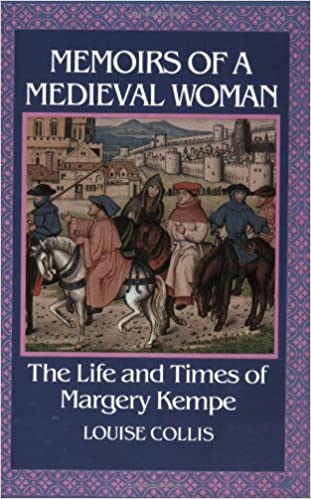
Memoirs Of A Medieval Woman: The Life And Times Of Margery Kempe, Louise Collis
(published 1983)
This unusual biography tells the story of an extraordinary fifteenth-century woman who journeyed all over Europe from England to the Holy Land to Santiago de Compostela. Kempe was married and had fourteen children when she deserted her family to make her extended pilgrimage to expiate a “secret sin” in her early life. Along the way she meets many famous prelates and dignitaries, gets into all sorts of scrapes, and survives a feverish voyage in the stinking galleys of a Venetian boat. Includes bibliographical references and index.
More info on Goodreads.
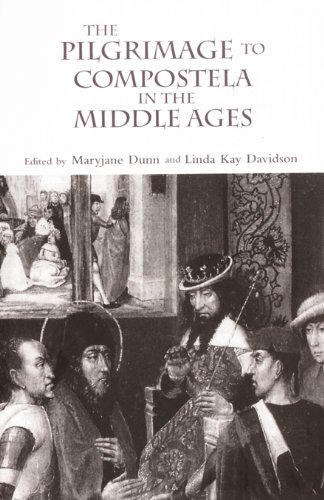
The Pilgrimage to Compostela in the Middle Ages: A Book of Essays, Maryjane Dunn and Linda Kay Davidson
(published 2000)
Nine studies address the phenomenon of the medieval pilgrimage to Santiago de Compostela. This volume was the first U.S.-published essay collection devoted to the subject, drawing on multiple disciplines – including music, history, art and religious history – to shed new light on the Santiago pilgrimage and its manifestations throughout Europe.
Also by Dunn and Davidson: Pilgrimage in the Middle Ages: A Research Guide (published in 1993), and The Pilgrimage to Santiago de Compostela: A Comprehensive Annotated Bibliography (published in 1994)
More info on Goodreads.

The Pilgrimage Road to Santiago: The Complete Cultural Handbook, David Gitlitz and Linda K. Davidson
(published 2000)
To fully appreciate the riches of the Camino, look no further than The Pilgrimage Road to Santiago, a fascinating step-by-step guide to the cultural history of the Road for pilgrims, hikers and armchair travelers alike. Organized geographically along the Francés, the book covers aspects of the terrain, places of interest, history, artistic monuments and each town and village’s historical relationship to the pilgrimage.
The authors have led multiple student treks along the Road, studying the art, architecture, and cultural sites of the pilgrimage road from southern France to Compostela. Their lectures, based on twenty-five years of pilgrimage scholarship and fieldwork, were the starting point for this handbook.
More info on Goodreads.
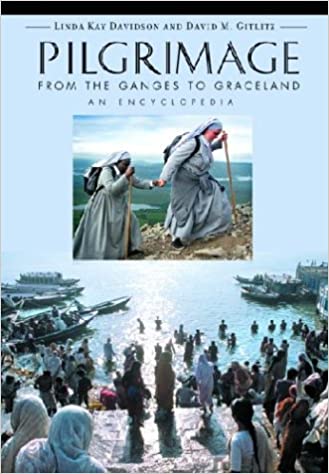
Pilgrimage: From the Ganges to Graceland, David Gitlitz and Linda K. Davidson.
(published 2002)
This encyclopedic two-volume set is a delight to read and pleasing to view. The authors begin with an introduction warranting a special note: in less than 10 pages, the reader receives a comprehensive overview of the history, nature and purpose of pilgrimage, cutting across cultures and faith traditions. Pilgrimage is defined here as “a journey to a special place, in which both the journey and the destination have spiritual significance for the journeyer.”
More info on Goodreads.
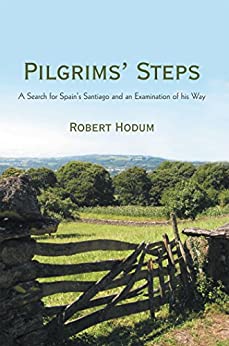
Pilgrims’ Steps: A Search for Spain’s Santiago and an Examination of his Way, Robert Hodum
Referencing biblical and ancient historical accounts, oral histories, contemporary analysis and current popular reflections, Pilgrims’ Steps examines the saint’s life and times and his connection to the religious and political movements of the 1st century. This work includes an in-depth overview of the origins and history of this region’s ancient cultures and their belief in the sacred landscape. Pilgrim’s Steps depicts the complex persona of St. James the Greater and examines the pre-Christian religions of Galicia as well as the evolution of the medieval Christian pilgrimage tradition along the Camino.
Author Robert Hodum maintains that contemporary pilgrimage tradition along the Way incorporates the ancient sacred routes of Galicia, linking prehistoric populations, Bronze Age peoples and early Christian pilgrims with today’s pilgrims.
More info on Goodreads.
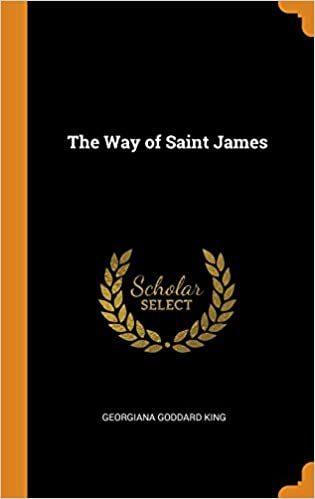
The Way of Saint James, Volumes I, II and III, Georgiana Goddard King
(reissued 2008)
This is a reissue of Georgiana Goddard King’s seminal study, The Way of Saint James. Completed in 1917, this three-volume set is a wide-ranging exploration of the history, literature, legends and architecture of the Camino de Santiago. It is based on Professor King’s wanderings on foot and by cart, mule and other conveyance on the Spanish pilgrimage road, and on extensive academic research with particular emphasis on medieval art and architecture.
Professor King was both a well-respected scholar and a keen observer of her surroundings. Thoroughly documented, with extensive notes and appendices, this is a must-have reference book not only for art historians but also for any true aficionado of the Camino.
More info on Goodreads.
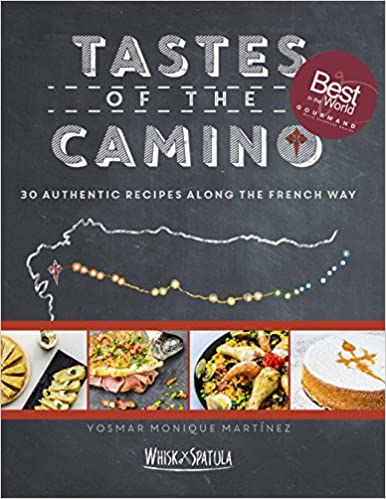
Tastes of the Camino: 30 Authentic Recipes along the French Way, Yosmar Monique Martinez
(published 2016)
Award-winning cookbook author and publisher, recipe developer and culinary instructor Yosmar Martinez reveals in Tastes of the Camino the foods along the Camino. Representing various towns and villages from Saint Jean Pied de Port to Santiago de Compostela, the 30 recipes will wow your senses and give you a taste of the food culture of the Camino de Santiago.
More info on Goodreads or the author’s website.
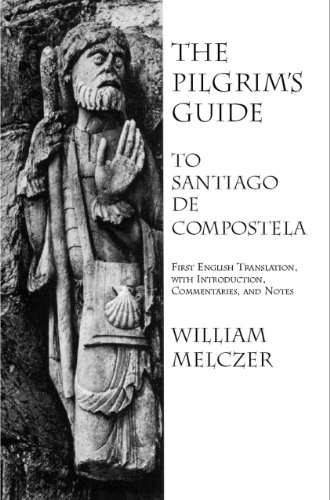
The Pilgrim’s Guide to Santiago de Compostela, William Melczer
(reissued 2009)
The Pilgrim’s Guide presents the first complete English translation of Book Five of the Liber Sancti Jacobi or Codex Calixtinus, the twelfth-century guidebook that traces the medieval Camino from southern France to Santiago de Compostela. As important and interesting as the translation of this central book of the Codex is, the most fascinating part of the book is Melczer’s extensive introduction about all facets of the cultural and historical position that the cult of Santiago held in the Middle Ages and his extensive notes on the text of the Codex.
More info on Goodreads.

The Lore of the Camino de Santiago: A Literary Pilgrimage, Jean Mitchell-Lanham
(published 2015)
Author Jean Mitchell-Lanham went for all the usual reasons – religious, midlife crisis, a need for adventure or a miracle, to visit Hemingway’s 1920s hangouts, to pay homage to Saint James. Then her academic and literary interests set her off on a secondary journey to dig deeper into the mysteries and the draw of the pilgrimage. The result is this book: a review with academic, regional, cultural, historical and religious facts. All intertwined with the author’s own journey.
More info on Goodreads.
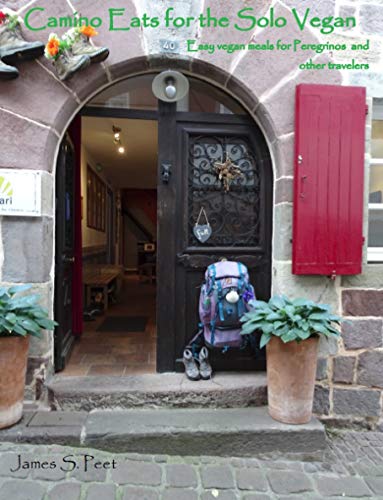
Camino Eats for the Solo Vegan: Easy Vegan Meals for Peregrinos and Other Travelers, James S. Peet
(published 2019)
The Camino is fraught with peril for vegans! A “vegetable salad” includes tuna, and ham is ubiquitous, even in dishes one might consider vegetarian. Designed for the pilgrim interested in cooking for him or herself, the book contains recipes for food that is basic, filling, but also tasty, with numerous permutations for many of the meals. Best of all, most of the ingredients can be bought for a lot less than the price of a similar meal in a restaurant (even less than what you would pay for the “menú del peregrino”).
More info on Goodreads.
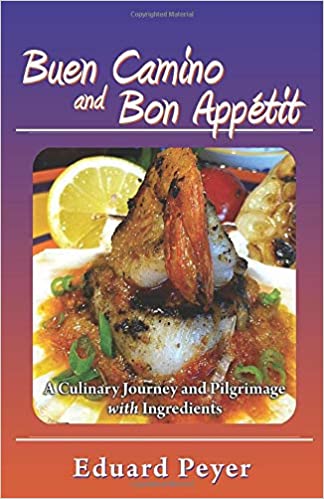
Buen Camino and Bon Appétit: A Culinary Journey and Pilgrimage With Ingredients, Eduard Peyer
(published 2012)
Buen Camino and Bon Appétit is filled with author Peyer’s stories about the people he met along the two major journeys of his life–a 40-year career as a chef in some of the best hotels on two continents and his pilgrimage along the Camino after he retired. His memoir contrasts the extreme pressure of life as a world-class chef with the simplicity of walking the Camino. He blends these two journeys in the final section of the book, a selection of the recipes that most vividly recall both journeys.
More info on Goodreads.
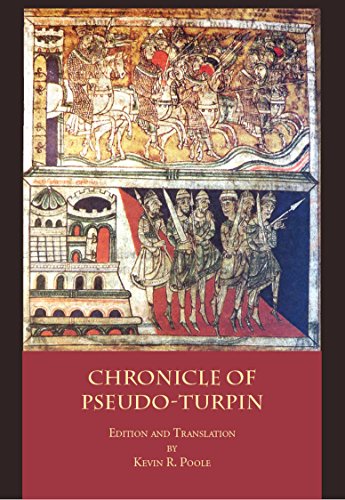
The Chronicle of Pseudo-Turpin: Book IV of the Liber Sancti Jacobi (Codex Calixtinus), Kevin R. Pool (Editor and Translator)
The twelfth-century Chronicle of Pseudo-Turpin, also known as the History of Charlemagne and Roland, offers an “eye-witness” account of events during the late eighth century. Charlemagne’s compatriot, Archbishop Turpin of Rheims, describes the miraculous appearance of Saint James to Charlemagne and the battles against the Muslims that he and Roland fought as a result of this vision. The Chronicle is one of the fundamental texts in the literary legend surrounding Charlemagne, Roland, Compostela and St. James.
In his introduction to this first modern English translation of the chronicle, Kevin Poole investigates the issues of fiction, legend and authorship and the relationship between the false chronicle and its wider literary tradition. He also highlights the possible connections between the work and its contemporary political and religious environment. 178 pages with 10 illustrations.
More info on Goodreads.

The 1918 Shikoku Pilgrimage of Takamure Itsue: An English translation of Musume Junreiki, Takamure Itsue with Susan Tennant (Translator)
(reissued 2010)
In 1918 a 24-year-old young woman set off to walk the 1,400 km pilgrimage route around the island of Shikoku (88 temples). This book is her account of her extraordinary experiences during her five-month journey. The 105 newspaper articles she wrote while making her pilgrimage made her a celebrity in Japan. In later years the woman, Takamure Itsue, became well known in Japan as a poet, intellectual, scholar, historian, feminist and anarchist. This is an English translation of the newspaper articles.
More info on Goodreads.

Pilgrimages: The Great Adventure of the Middle Ages, John Ure
(published 2006)
Using contemporary accounts, former British Ambassador Sir John Ure relates the stories of medieval Christian pilgrimage during the years 1066 to 1536. Through the often-forgotten records of Erasmus, John of Gaunt and Margery Kempe among others, the author brings to life a colorful cast of characters.
More info on Goodreads.
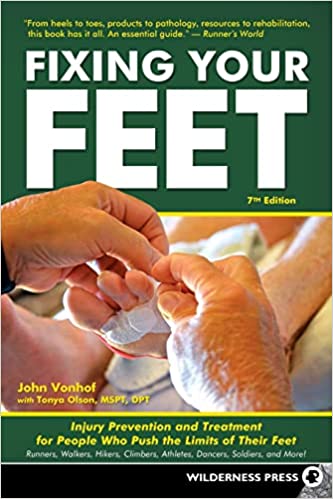
Fixing Your Feet: Prevention and Treatment for Athletes, John Vonhof
(published 2021)
Foot pain and injuries can thwart even the most experienced pilgrim. Foot expert John Vonhof discredits the conventional wisdom of “no pain, no gain,” teaching instead how the interplay of anatomy, biomechanics and footwear can lead to happy or hurting feet. With a focus on individual and team care, Fixing Your Feet covers everything that an active person needs for immediate and long-term foot care solutions. Vonhof offers numerous solutions for each problem, as there is no one best solution.
This comprehensive resource covers footwear basics, prevention and treatments along with clear diagrams, photos, and charts that demonstrate techniques and solutions.
More info on Goodreads.
More Camino Inspiration
If you are planning a Camino, be sure to request a credential from us. Learn about the various ways to do the Camino on our routes page. And join a local chapter for community and local hikes.
We’ve also got a ton of good Camino planning resources.
Rev 04/07/23

